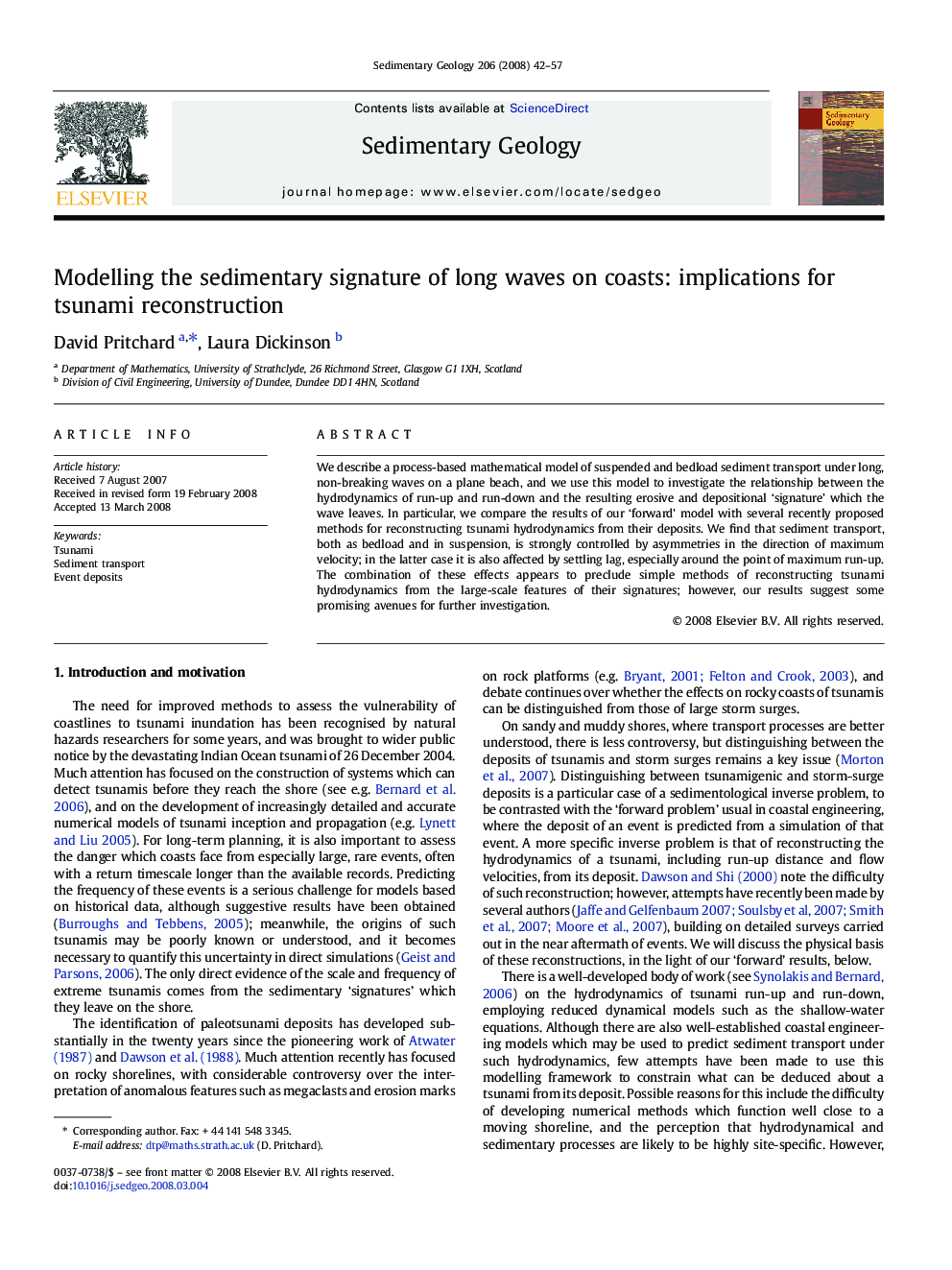| Article ID | Journal | Published Year | Pages | File Type |
|---|---|---|---|---|
| 4690604 | Sedimentary Geology | 2008 | 16 Pages |
Abstract
We describe a process-based mathematical model of suspended and bedload sediment transport under long, non-breaking waves on a plane beach, and we use this model to investigate the relationship between the hydrodynamics of run-up and run-down and the resulting erosive and depositional 'signature' which the wave leaves. In particular, we compare the results of our 'forward' model with several recently proposed methods for reconstructing tsunami hydrodynamics from their deposits. We find that sediment transport, both as bedload and in suspension, is strongly controlled by asymmetries in the direction of maximum velocity; in the latter case it is also affected by settling lag, especially around the point of maximum run-up. The combination of these effects appears to preclude simple methods of reconstructing tsunami hydrodynamics from the large-scale features of their signatures; however, our results suggest some promising avenues for further investigation.
Keywords
Related Topics
Physical Sciences and Engineering
Earth and Planetary Sciences
Earth-Surface Processes
Authors
David Pritchard, Laura Dickinson,
